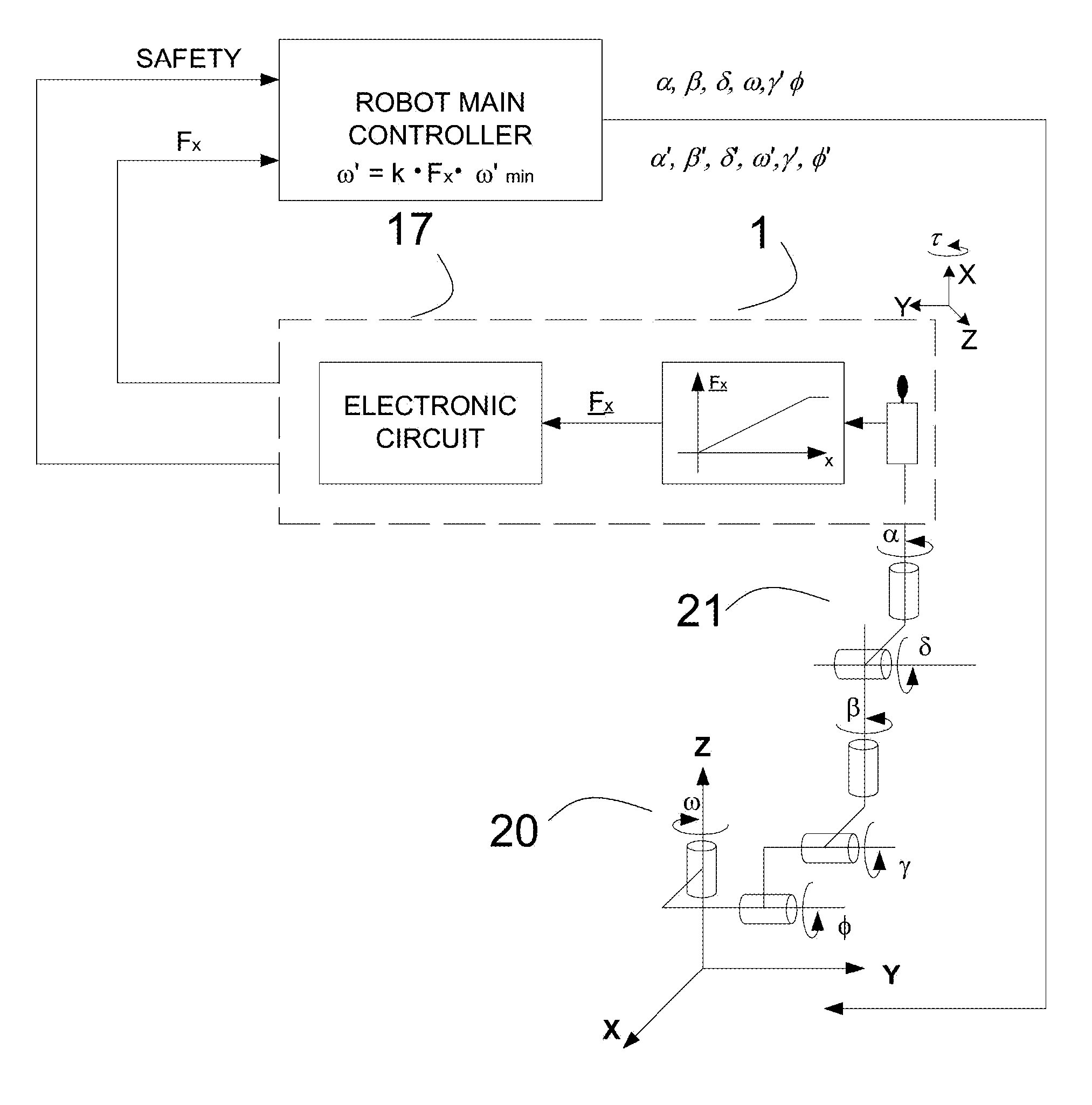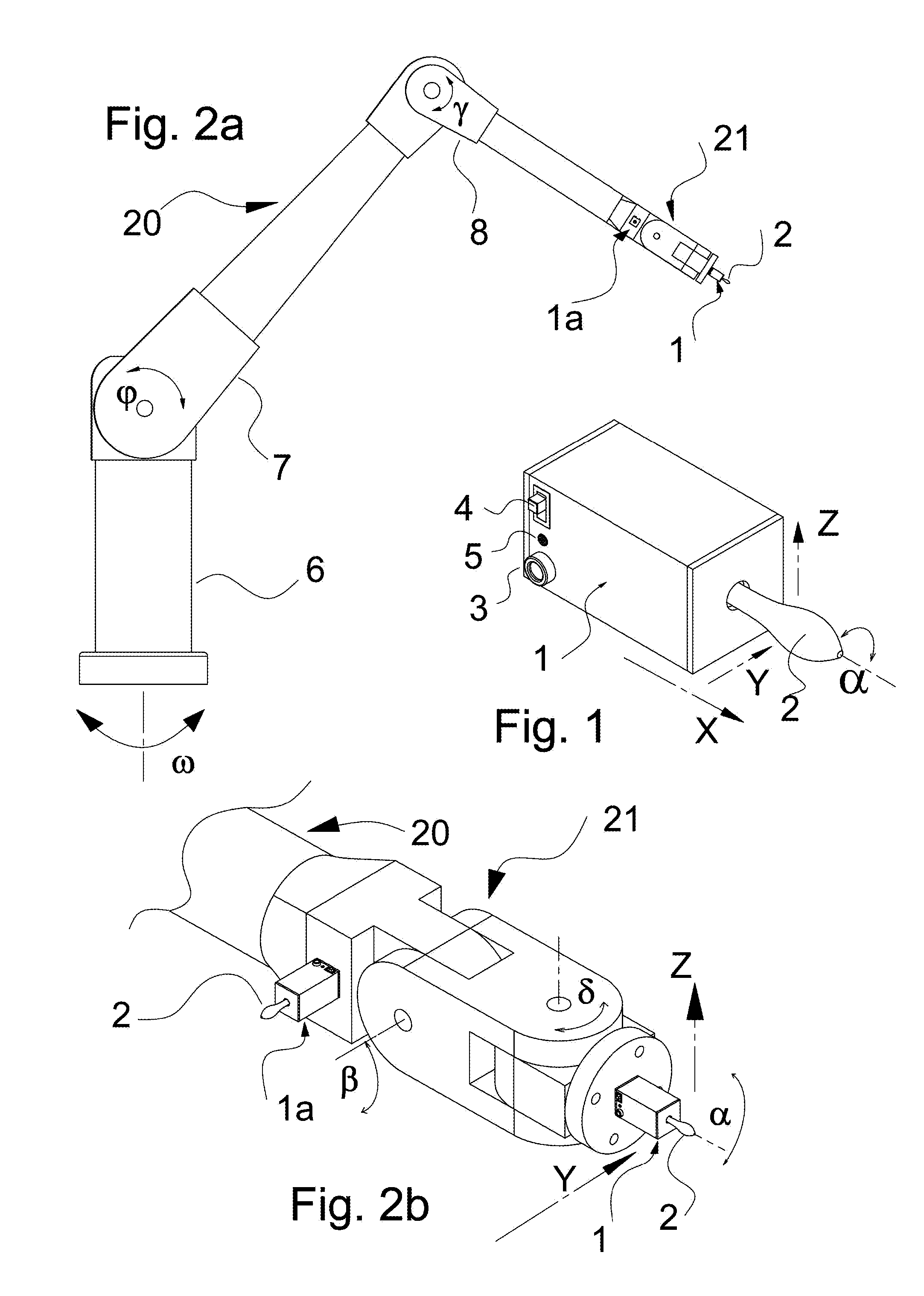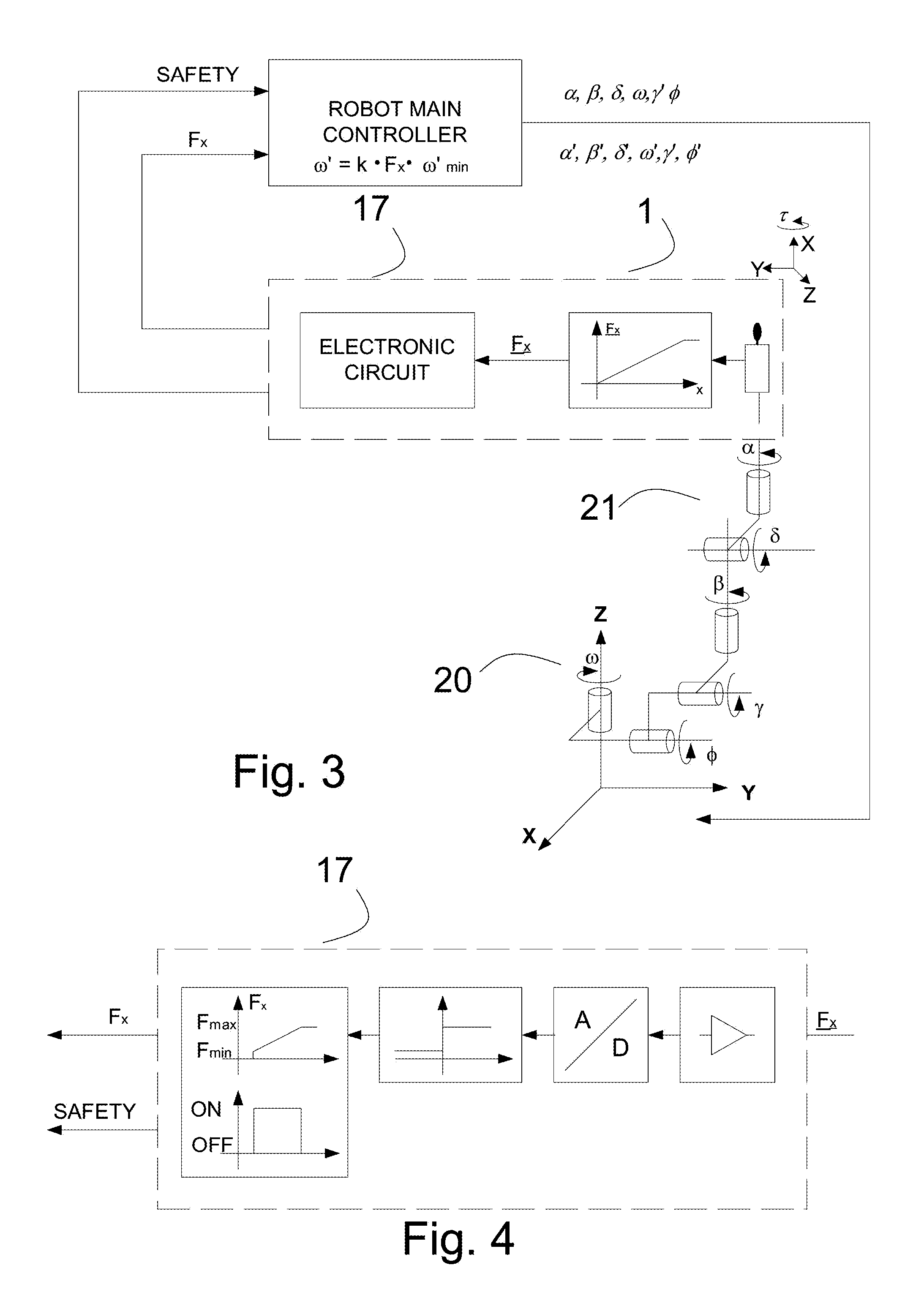Method and apparatus for robot teaching
a robot and robot technology, applied in the field of industrial robots, can solve problems such as the mental inability to activate an external safety switch, and achieve the effect of removing prior art deficiencies and limitations
- Summary
- Abstract
- Description
- Claims
- Application Information
AI Technical Summary
Benefits of technology
Problems solved by technology
Method used
Image
Examples
Embodiment Construction
[0033]The present invention will be described in detail based on the embodiments illustrated in the drawings. The embodiments of the present invention described below are not intended to be exhaustive or to limit the invention to the particular embodiments disclosed in the following detailed description. Rather, the embodiments are described so that others, particularly those skilled in the art may appreciate and understand the principles and practices of the invention.
[0034]To achieve this object, this invention provides a four degree of freedom apparatus implementing tactile sensors generating electrical signal corresponding to the force applied to the said sensors. The terms “tactile sensor” or “force sensor” as used herein, generally refer to a device having a touch sensitive surface that can detect contact with another tangible structure, object, entity, or the like. In particular, a touch sensitive surface can indicate not only that the surface is touched but also can provide ...
PUM
 Login to View More
Login to View More Abstract
Description
Claims
Application Information
 Login to View More
Login to View More - R&D
- Intellectual Property
- Life Sciences
- Materials
- Tech Scout
- Unparalleled Data Quality
- Higher Quality Content
- 60% Fewer Hallucinations
Browse by: Latest US Patents, China's latest patents, Technical Efficacy Thesaurus, Application Domain, Technology Topic, Popular Technical Reports.
© 2025 PatSnap. All rights reserved.Legal|Privacy policy|Modern Slavery Act Transparency Statement|Sitemap|About US| Contact US: help@patsnap.com



